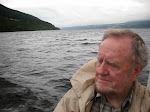First-past-the-Post gave Newfoundland and Labrador a false-majority government this year. Their PCs got 21 of the 40 seats in the House of Assembly with only 44.4 % of the votes. The CBC noted “Their win sets a new benchmark in this province for forming a majority government with the smallest vote share."
Liberal voters
cast 43.4 % of the votes, which would have entitled them, proportionally,
to elect 17 of the 40 MHAs, while PC voters would have elected 18 MHAs. NDP
voters cast 8.3% of the votes, which would have elected 3 MHAs. The two
incumbent independents got enough votes to be re-elected locally, which the Mixed
Member Proportional system would very likely have permitted.
Who would have
formed the government? The Liberals 17 plus the NDP’s 3 seats needed support from
one independent. Eddie Joyce, who got 72% of the local vote, had been a Liberal
cabinet minister until kicked out of the Liberal caucus for breaking the code
of conduct by lobbying. Paul Lane, who got 57% of the local vote, had
originally been elected as a PC, then switched to the Liberals, then left them
and was elected three times as an independent. The PCs 18 would have needed
support from the NDP, unlikely.
But would the
NDP have gotten more votes if voters knew every vote would count? They held St.
John’s Centre, and picked up St. John's East-Quidi Vidi which the NDP had won
in 2 of the last 3 elections, and their candidate was a long-time member of St.
John’s municipal council and twice elected Deputy Mayor. Their third-strongest
candidate in St. John’s, a strong third, was Nicole Boland, a Registered Social
Worker with a Master’s degree in Social Work. She got 25.4% of the vote, and if
the NDP deserved a third MHA in St. John’s, she looks like it.
Metropolitan St. John.s has 212,579
residents, or including the whole Avalon Peninsula, 270,348 residents, compared
to the provincial total of 510,550.
Newfoundland’s
40 MHAs include 18 from St. John’s and the Avalon peninsula. In that region
Liberal voters cast 46.2% of the vote, the PC’s 37.1%, and the NDP 12.6%. Those
PCs elected only 6 MHAs in that region, but deserved 7. Perhaps they would have
elected Rhonda Power who got 41.5% of the vote in Placentia - St. Mary's,
losing by only 502 votes.
However, in the
rest of Newfoundland and Labrador, PC voters cast 52.6% of the votes yet elected
15 MHAs, while the Liberals’ 39.8% elected only 6 MHAs, and NDP voters 3.9%
elected no one. In that region proportional representation would have elected 9
Liberals, one New Democrat, 11 PCs, and Eddie Joyce. The NDP candidate in Labrador
West, Shazia Razi, NDP, got 13.4%, hoping to succeed previous NDP MNA Jordan
Brown who became mayor of Labrador City. Also prominent was Corner Brook NDP
candidate Jean Graham, active in her union, the District Labour Council, and
the Newfoundland-Labrador Human Rights Association, who got 8.6% of the vote
there. Three more Liberals might have included incumbent MHAs Derek Bennett,
Speaker in the last House, who lost by only 18 votes; and Krista Howell, Minister
of Health and Community Services, who lost by only 595 votes; plus perhaps Mark
Lamswood (nominated to replace Minister of Environment and Climate Change Scott
Reid, who got 45.3%), or Helen Reid (nominated to replace outgoing Premier
Andrew Furey, who got 42.6%).

No comments:
Post a Comment